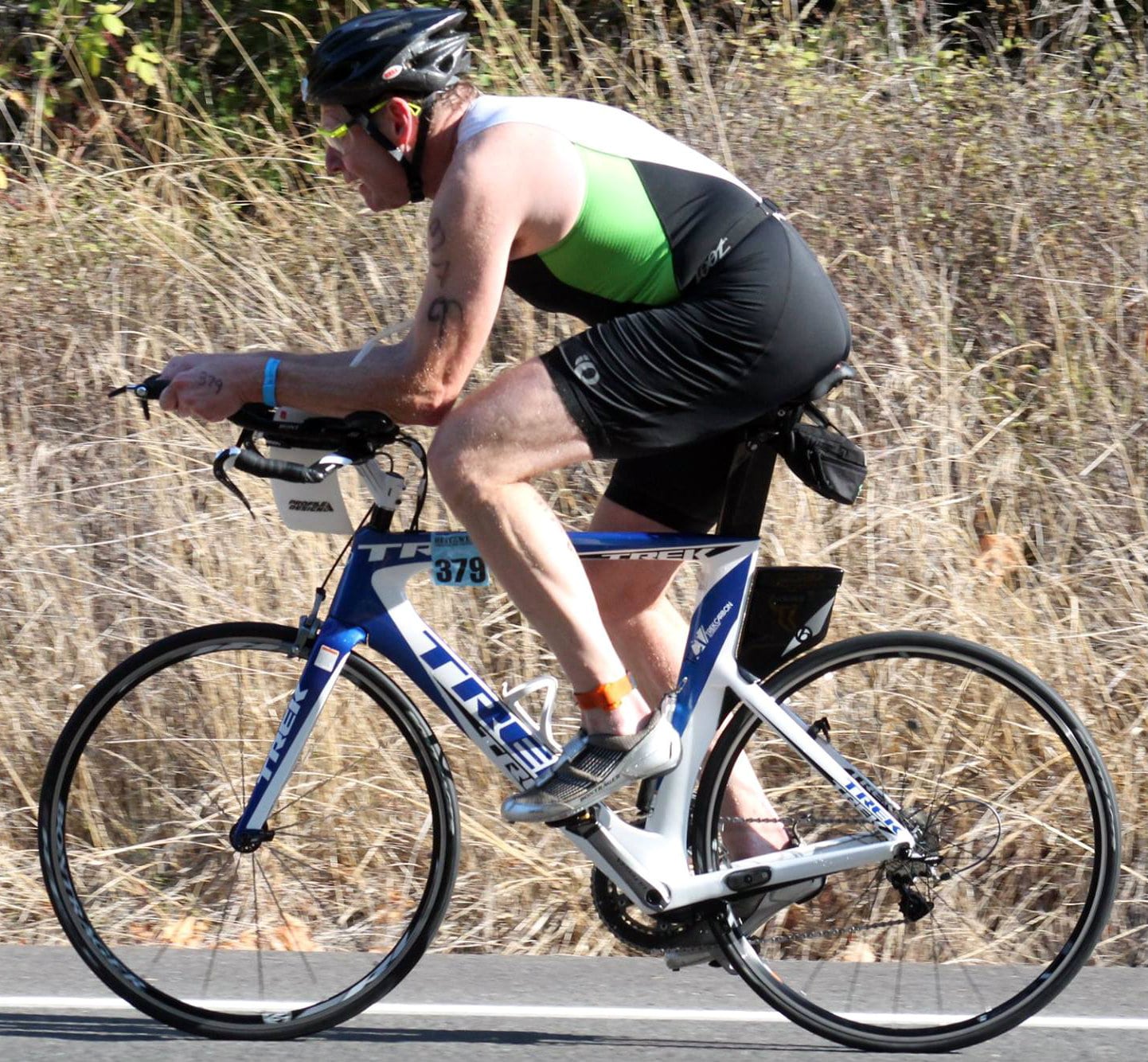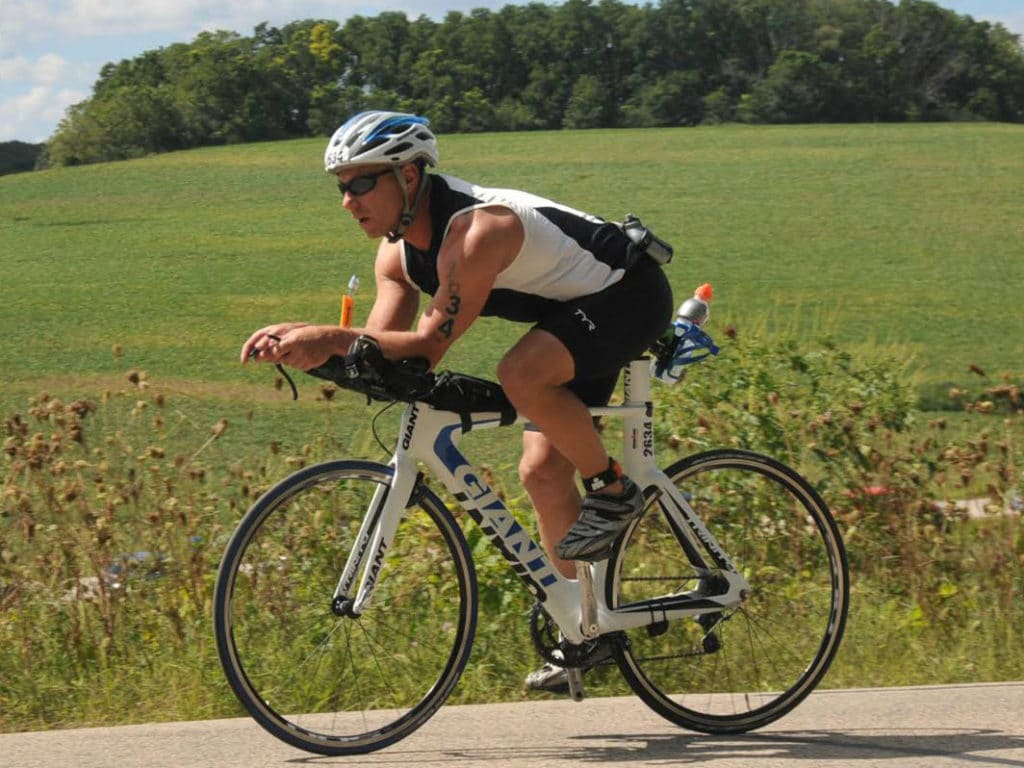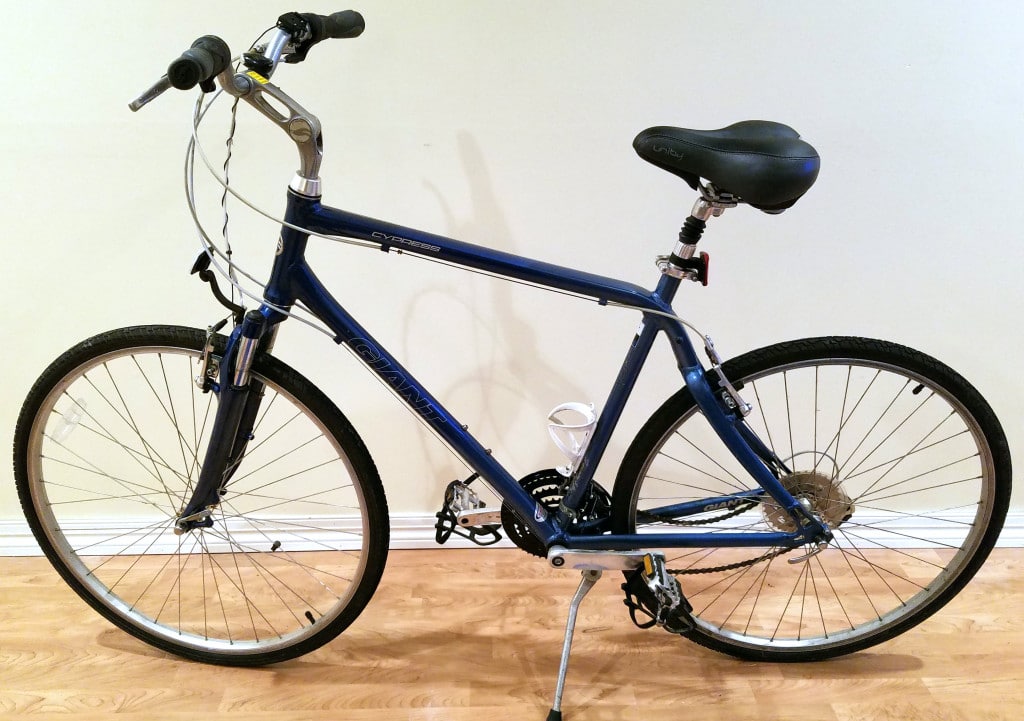Five Factors For Selecting a Bike For Triathlon

Selecting a bike for triathlon, especially for the beginner triathlete, can feel overwhelming. However, considering a few factors will make the process simpler and less stressful.
In this post, I will summarize the factors I used to choose the bikes for my first sprint triathlons.
Factors in Choosing a Bike
If you have visited a bike shop recently, you will find a mind-boggling number of bike styles. The many options target a range of budgets for different riders, terrains, and activities.
Selecting the bike you will you use for your triathlons is an individual decision. The following five factors can be useful for making this selection.
- Cost
- Comfort
- Construction
- Course
- Commitment
Why Ride in the Aero Position?
Compared to other activities involving bike riding, the conventional (swim/bike/run) triathlon involves the triathlete completing the bike leg, getting off the bike, taking off their helmet, putting on running shoes, and setting off for a run of at least several miles (kilometers).
The amount of work done by the running muscles, primarily the quadriceps and hamstrings, during the bike leg and the time that it takes for the running muscles to adjust to running is key to the run speed and one’s overall performance (time) in the race.
For this reason, the triathlon specific bike, or tri-bike, is designed to be ridden in an aerodynamic (also known as “aero”) position as pictured below.
The aero position is one which the rider is in a forward position with forearms resting on pads mounted to the handlebars. Riding in the aero position minimizes the work required of the main running muscles during the bike leg.

Despite this, one will see many types of bikes in a triathlon, especially for shorter races. After all, most of us take part in triathlon to remain active and fit, not necessarily to set race records.
So, with that background, let’s review the factors in selecting the bike.
Cost
The good news is that you probably have access to a bike for your next triathlon. If you do not already have a bike, you may borrow one from a friend or family member.
For my first triathlon, I used an existing hybrid bike. Truth-be-told, I had never seen a tri-bike before this race. I had also never ridden a road bike.

If you decide you want to compete seriously to win a race or place within your age group, then you will want a triathlon bike or at least a well-outfitted road bike with aerobars.
In this case, the bike will easily become the most expensive piece of race gear. Price tags for new triathlon specific bikes generally start at four figures. In fact, it is easy to find bikes with five-figure prices.
Comfort
In my experience, riding a triathlon bike is not nearly as comfortable as riding a hybrid bike. I can say the same for the road bike compared to the hybrid.
I have changed the seat on my triathlon bike from the one with which it was first fitted. This has made the ride more comfortable (less numbness in the seated area). However, it is still not as comfortable as the seat on my hybrid bike. I often joke that riding the hybrid is like biking while sitting on the couch.
Getting comfortable riding in the aero position can be a challenge. For a triathlon bike, riding in the aero position is, for practical purposes, required since the shift levers are at the far ends of the aero bars. For this reason, I rarely ride my triathlon bike on winding trails and never on trails with pedestrian traffic.
On the other hand, the triathlon bike is much faster than a hybrid bike and saves the legs for running.
Construction
As summarized in the table below, factors such as distance of the bike leg or ride, rider weight, and riding frequency can influence the optimum material for construction of the bike frame.
| Material | Strengths | Weaknesses |
| Aluminum or aluminium1 | Light and stiff—ideal for shorter distances and hill climbing | Lighter weight riders and anyone with aches and pains, such as a sore back, will feel roughness in the road. |
| Steel | Strong and elastic (flexible) – good shock absorbency, ideal for long rides. | Relatively heavy, though in the context of the weight of the rider plus bike, this is a minor weakness. |
| Carbon fiber | Best shock absorbency – good for long distance rides and riders with sore backs. | Flexibility can result in loss of power being transferred to the bike, a more important factor for hilly rides. Expensive to repair. |
| Titanium | Good shock absorbency for rough roads and stiffness for efficient transfer of power to the bike. | Expensive. |
1 This is the spelling most non-American English speakers will recognize.
The construction of the wheels and drivetrain and brake components can also affect the performance of the bike through their weight and reliability.
Course
The previous section highlighted how the smoothness (or roughness) of the race course affects the optimum material. For a typical spring/summer/fall triathlon with the bike course on roads, the next variable in selecting a road or tri bike for triathlon is the size of hills included in the course.
The ideal bike for hilly courses is low weight and has gearing ratios consistent with the grade of hills. Without the correct gear ratios, one can quickly ‘run out of gas’ when climbing steep hills. (In my experience, this also occurs even sooner at a higher elevation.)
For races with off-road courses, a mountain bike or fat tire bike (‘fat bike’, for short) are best. If the bike course is on sand or snow, the ‘fat bike’ is the best option.
You can see fat bikes in action at the 2016 USAT National Winter Triathlon Championship. While fat bikes were best for this course, some racers still used road bikes.
Fat bikes have grown in popularity for their comfort and all-terrain, all-weather use. At an open house of my favorite Minnesota bike shop, I was told that nearly everyone working in the store now rides a fat bike year round.
Commitment
Buying a triathlon bike represents a commitment to the sport.
After my first triathlon, I decided to get a different, faster bike. During a training ride before shopping for the bike, I spoke with a person from my local bike shop. His advice – which I am convinced is correct – is that if you are looking for a general purpose bike (triathlon plus rides with the family), get a road bike. If however, you want to get the best performance in the bike leg of a triathlon, get a triathlon bike.
Make Sure Your Bike Fits
Selecting a bike for triathlon that fits properly is critical. Having an expensive triathlon bike without the seat, aerobar rests, or other main components adjusted for your specific body proportions will be frustrating. Riding a bike that does not properly fit the rider can even be painful.
As I have gained experience and flexibility, I have also had the bike fit checked and adjusted.
What Questions Do You Have About Selecting A Bike For Triathlon?
If you are considering a new bike, what questions do you have?
If you are an experienced triathlete, what bike do you use for triathlons? What do you recommend for those starting the sport?
Leave your comments below.
Originally published on March 19, 2016 and updated on March 17, 2021.
